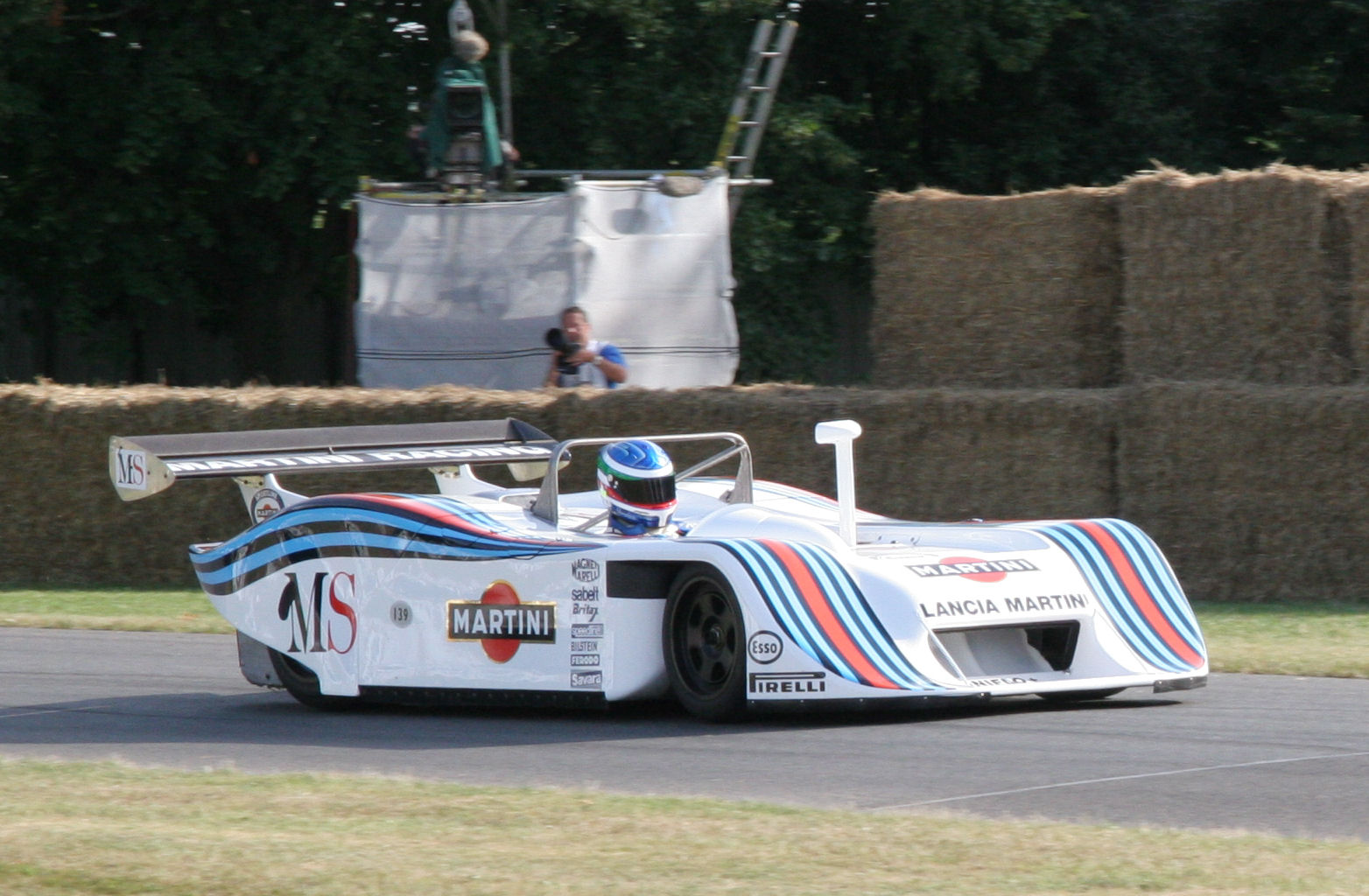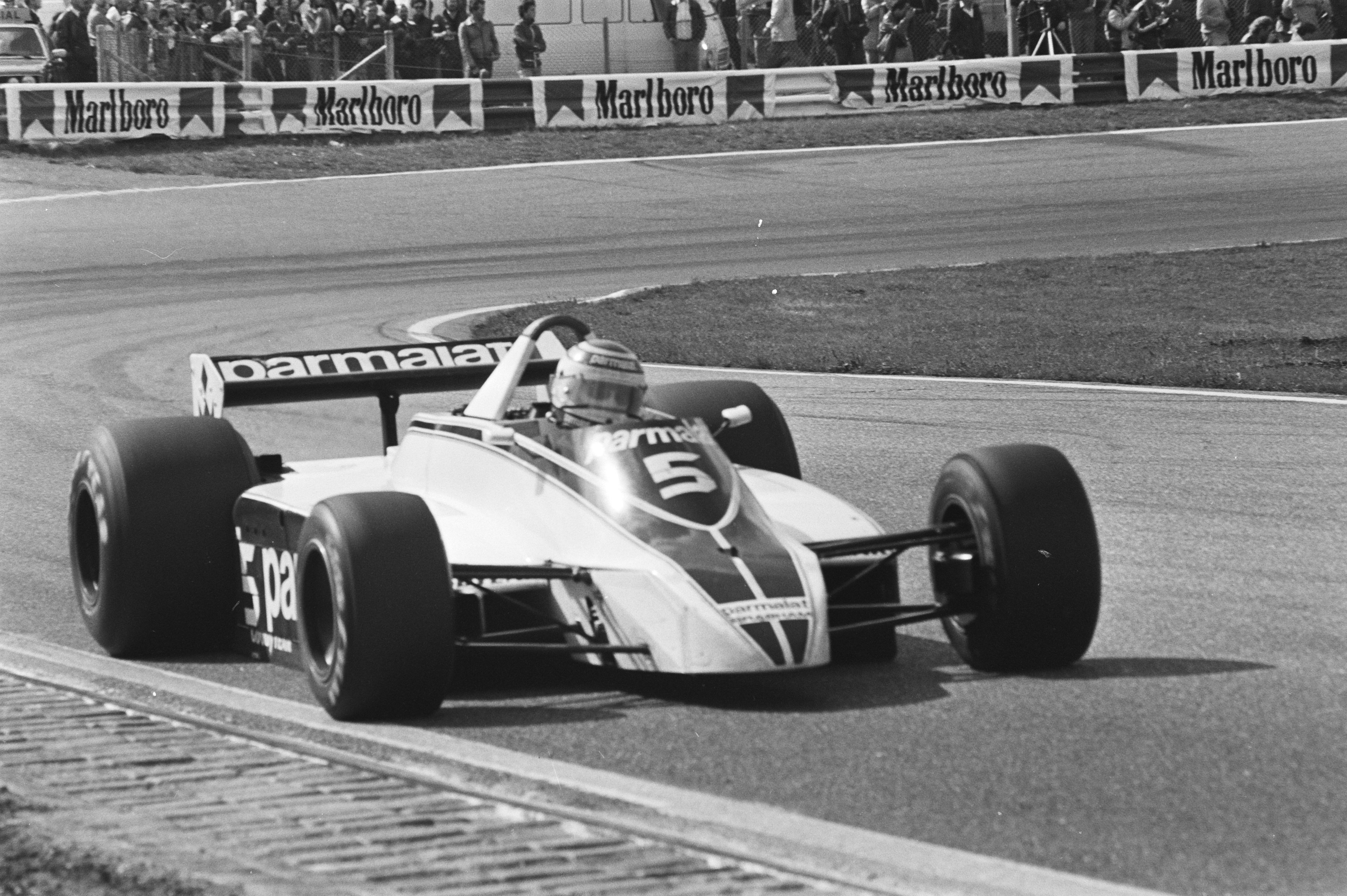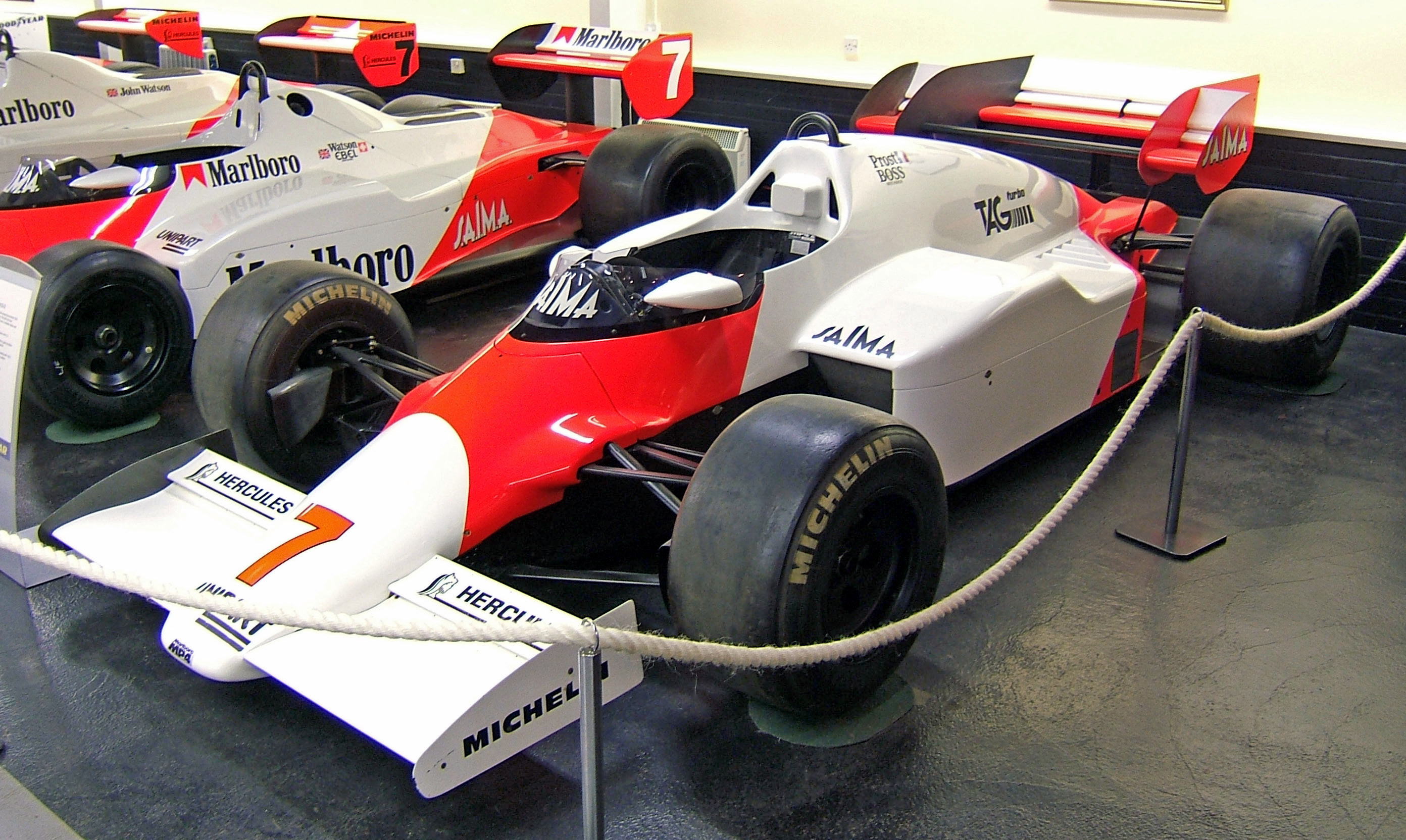|
1984 Brazilian Grand Prix
The 1984 Brazilian Grand Prix, officially known as the XIII Grande Prêmio Brasil de Fórmula 1 was a Formula One motor race held on 25 March 1984 in Rio de Janeiro. The race was contested over 61 laps of Jacarepaguá Circuit and was the first race of the 1984 Formula One World Championship. This race was the 13th edition of the Brazilian Grand Prix, the ninth time that the Jacarepaguá Circuit race held a Grand Prix, and marked the debut of Ayrton Senna in Formula One. In qualifying, Italian driver, Elio de Angelis from Team Lotus claimed pole for the second time in his career as he finished ahead of fellow Italian driver, Michele Alboreto who was in the Ferrari. In the race it was Alain Prost in the McLaren car who would take out his second win in Brazil. He finished ahead of Keke Rosberg who was in the Williams with de Angelis finishing in third. Qualifying Elio de Angelis claimed the first pole position of the season in his Lotus-Renault from the Ferrari of Michele Albore ... [...More Info...] [...Related Items...] OR: [Wikipedia] [Google] [Baidu] |
Autódromo Internacional Nelson Piquet
The Autódromo Internacional Nelson Piquet (Nelson Piquet International RaceTrack), also known as Jacarepaguá after the neighbourhood in which it was located, and also as the Autódromo Riocentro, was a motorsport circuit in Rio de Janeiro, Brazil. Opened in January 1978, a few weeks before 1978 Brazilian Grand Prix, it hosted the Formula One Brazilian Grand Prix on ten occasions, and was also used for CART, motorcycle racing and stock car racing. In 2012, it was demolished to make way for facilities to be used at the 2016 Summer Olympics. The original circuit The original circuit was built between 1971 and 1977 on the site of the Barra da Tijuca road course, which had itself been built on reclaimed marshland and was operational from 1964 to 1970. It was a relatively flat circuit, with a long pit straight and a longer back straight (which allowed the turbo-engined Formula One cars of the mid-1980s to reach speeds of , and numerous mid-speed to slow-speed corners with plenty of r ... [...More Info...] [...Related Items...] OR: [Wikipedia] [Google] [Baidu] |
Michele Alboreto
Michele Alboreto (; 23 December 1956 – 25 April 2001) was an Italian racing driver. He was runner up to Alain Prost in the 1985 Formula One World Championship, as well as winning the 1997 24 Hours of Le Mans and 2001 12 Hours of Sebring sports car races. Alboreto competed in Formula One from until , racing for a number of teams, including five seasons (1984–88) for Ferrari. His career in motorsport began in 1976, racing a car he and a number of his friends had built in the Formula Monza series. The car, however, achieved very little success and two years later Alboreto moved up to Formula Three. Wins in the Italian Formula Three championship and a European Formula Three Championship crown in 1980 paved the way for his entrance into Formula One with the Tyrrell team. Two wins, the first in the final round of the season in Las Vegas, and the second a year later in Detroit, earned him a place with the Ferrari team. Alboreto took three wins for the Italian team and challe ... [...More Info...] [...Related Items...] OR: [Wikipedia] [Google] [Baidu] |
Eddie Cheever
Edward McKay "Eddie" Cheever Jr. (born January 10, 1958) is an American former racing driver who raced for almost 30 years in Formula One, sports cars, CART, and the Indy Racing League. Cheever participated in 143 Formula One World Championship races and started 132, more than any other American, driving for nine different teams from 1978 through 1989. In 1996, he formed his own IRL team, Team Cheever, and won the 1998 Indianapolis 500 as both owner and driver. The team later competed in sports cars. His younger brother Ross Cheever, nephew Richard Antinucci and son Eddie Cheever III also became racing drivers. Early life Though born in Phoenix, Arizona, Cheever lived in Rome, Italy, as a child and attended St. George's British International School. He was introduced to motorsports at age eight when his father took him to a sports car race in Monza. He soon began racing go-karts and won both the Italian and European Karting Championships at age 15. He worked his way up throug ... [...More Info...] [...Related Items...] OR: [Wikipedia] [Google] [Baidu] |
Williams FW09
The Williams FW09 was a Formula One car designed by Frank Dernie and Neil Oatley. It was the first Williams chassis to be powered by a turbocharged Honda V6 engine, for which Frank Williams negotiated a deal towards the end of 1982 and the beginning of 1983. Honda was already supplying the small Spirit team for 1983, but was enthusiastic about supplying Williams, who not only had the reigning World Champion Keke Rosberg as lead driver, but were one of the leading constructors in Formula One who had previously won both the Drivers' and Constructors titles on two occasions, a résumé that neither Spirit nor their young Swedish driver Stefan Johansson could match. Williams had agreed to help develop the engine under Grand Prix race conditions. Spirit folded shortly afterwards. Overview 1983 The chassis was built from aluminium with carbon fibre used at stress points and was based on the reasonably successful 1983 Williams FW08C. The engine cover had to be redesigned as the c ... [...More Info...] [...Related Items...] OR: [Wikipedia] [Google] [Baidu] |
Niki Lauda
Andreas Nikolaus "Niki" Lauda (22 February 1949 – 20 May 2019) was an Austrian Formula One driver and aviation entrepreneur. He was a three-time Formula One World Drivers' Champion, winning in , and , and is the only driver in Formula One history to have been champion for both Ferrari and McLaren, two of the sport's most successful constructors. He was an aviation entrepreneur who founded and ran three airlines: Lauda Air, Niki and Lauda. He was also a consultant for Scuderia Ferrari and team manager of the Jaguar Formula One racing team for two years. Afterwards, he worked as a pundit for German TV during Grand Prix weekends and acted as non-executive chairman of Mercedes-AMG Petronas Motorsport, of which Lauda owned 10%. Lauda emerged as Formula One's star driver amid a title win and leading the championship battle. Lauda was seriously injured in a crash at the 1976 German Grand Prix while racing at the Nürburgring; during the crash his Ferrari 312T2 burst into ... [...More Info...] [...Related Items...] OR: [Wikipedia] [Google] [Baidu] |
Hart Racing Engines
Brian Hart Ltd., also known as Hart and Hart Racing Engines, was a motor racing engine manufacturer that participated in 157 Formula One Grands Prix, powering a total of 368 entries. Founded in 1969 by British engineer Brian Hart, Hart initially concentrated on servicing and tuning engines from other manufacturers for various independent British teams at all levels of motorsport. Hart found particular success with developments of Ford's FVA engine, eventually leading the large multinational company to approach the small independent to develop the Ford BDA 1.6 L engine for the 2.0L class. The European Formula Two title was won in both 1971 and 1972 with Hart-built Ford engines, and the 2.0 L BDA engine powered the majority of Ford's 1970s rallying successes. With Ford's withdrawal from F2 in the mid-1970s, Hart began to concentrate on building their own designs. The first engine to bear the Hart name alone was the twin-cam, four-cylinder Hart 420R F2 unit, which appear ... [...More Info...] [...Related Items...] OR: [Wikipedia] [Google] [Baidu] |
Toleman TG183
The Toleman TG183 was a Formula One racing car designed by Rory Byrne and built and raced by Toleman Motorsport. Design The TG183 was distinctive in that it had twin rear wings and front wing mounted radiators. Unfortunately the front wing configuration caused the front of the car to move about at high speed and was eventually replaced by a more conventional front wing set up. Competition summary The car first raced in the last two races of the 1982 Formula One season driven by Derek Warwick. In the 1983 Formula One season an updated version of the car, designated TG183B, was introduced and Warwick was joined at Toleman by Bruno Giacomelli. The car also raced in the first four races of the 1984 Formula One season when Ayrton Senna made his debut in the Formula 1 championship alongside former FIM 350cc and Formula 750 motorcycle World Champion Johnny Cecotto from Venezuela. The TG183B's last race meeting, the 1984 San Marino Grand Prix saw the only time that Ayrton Senna w ... [...More Info...] [...Related Items...] OR: [Wikipedia] [Google] [Baidu] |
BMW M12
The BMW M12/13 turbo was a 1499.8 cc 4-cylinder turbocharged Formula One engine, based on the standard BMW M10 engine introduced in 1961, powered the F1 cars of Brabham, Arrows and Benetton. Nelson Piquet won the FIA Formula One Drivers' Championship in 1983 driving a Brabham powered by the BMW M12/13 turbo. It was the first Drivers' Championship to be won using a turbocharged engine. The engine also powered the BMW GTP and in the 2.0-litre naturally-aspirated form, the successful March Engineering Formula Two cars. BMW engineers figured the engine produced around 1,400 hp at maximum boost, however the BMW engine dynamometer could not go beyond 1,280 bhp. History Formula 2 As BMW M12/7, the engine design since the 1960s became one of the most successful engines in racing. Starting with the European Touring Car Championship, it was also used in Formula 2, expanded to two-litre and fitted with four-valve heads, producing over . In the Deutsche Rennsport Meisters ... [...More Info...] [...Related Items...] OR: [Wikipedia] [Google] [Baidu] |
Brabham BT53
The Brabham BT53 was a Formula One car designed by Gordon Murray for the Brabham team for the 1984 Formula One season and was a development of the BT52 which had carried the team's lead driver Nelson Piquet to the championship. Car The car was almost identical to the final development version of the car, the BT52B, but featured larger sidepods for improved cooling, and the turbochargers and intercoolers were repositioned for better fuel efficiency as refuelling stops were now banned, leading to the car having to carry an enlarged (220 litre) fuel tank. The turbocharged BMW M12 engine now produced around in qualifying trim, de-tuned to for the races, making it the most powerful car ever seen in F1 at the time. This power allowed Piquet to record the fastest speed trap of the 1984 season when he clocked on the 1 km long straight at the old Kyalami circuit during qualifying for Round 2 of the championship in South Africa. Like all other cars in Formula One in 1984, the ... [...More Info...] [...Related Items...] OR: [Wikipedia] [Google] [Baidu] |
Nelson Piquet
Nelson Piquet Souto Maior (, born 17 August 1952) is a Brazilian retired racing driver and businessman. Since his retirement, Piquet, a three-time World Champion, has been ranked among the greatest Formula One (F1) drivers in various motorsport polls. Piquet had a brief career in tennis before losing interest in the sport and subsequently took up karting and hid his identity to prevent his father discovering his hobby. He became the Brazilian national karting champion in 1971–72 and won the Formula Vee championship in 1976. With advice from Emerson Fittipaldi, Piquet went to Europe to further success by taking the record number of wins in Formula Three in 1978, beating Jackie Stewart's all-time record. In the same year, he made his Formula One debut with the Ensign team and drove for McLaren and Brabham. In 1979, Piquet moved to the Brabham team and finished the runner-up in 1980 before winning the championship in 1981. Piquet in 1982 was hampered by severe engine unreliabi ... [...More Info...] [...Related Items...] OR: [Wikipedia] [Google] [Baidu] |
McLaren MP4/2
The McLaren MP4/2 was a Formula One car produced by McLaren for the 1984 season. An iteration of it, the MP4/2B, was used in the 1985 season, and a slightly updated version, the MP4/2C, raced in the 1986 season for McLaren. It was closely based on the MP4/1E model that was used as a test car, used in the final races of 1983. The chassis was designed by John Barnard, Steve Nichols, Gordon Kimball, Alan Jenkins, Tim Wright and Bob Bell with the car being powered by a TAG-Porsche engine, designed by Hans Mezger at Porsche. Overview 1984 Like most of its major competitors (other than the Williams FW09), the car used an all carbon fibre chassis pioneered by the car's designer John Barnard with its predecessor, the MP4/1. The car was powered by a 1.5 Litre, 90° V6 TAG-Porsche turbo engine that produced in race set-up and up to in qualifying set-up i.e. with maximum turbo pressure. It was first used in the 1983 Dutch Grand Prix, at the insistence of veteran Niki Lauda ... [...More Info...] [...Related Items...] OR: [Wikipedia] [Google] [Baidu] |
Derek Warwick
Derek Stanley Arthur Warwick (born 27 August 1954) is a British former professional racing driver from England, who lives in Jersey. He raced for many years in Formula One, collecting four podiums but never winning a Grand Prix. He did, however, win the 1992 24 Hours of Le Mans and 1992 World Sportscar Championship season, 1992 World Sportscar Championship. In 2005 and 2006 he raced in the inaugural season of the Grand Prix Masters formula for retired Formula One drivers. He has served as the fourth steward for three Grands Prix in 2010 and 2011. He was president of the British Racing Drivers Club (2011-2017), succeeding Damon Hill and preceding Paddy Hopkirk. Early life and career Warwick was born in New Alresford, Alresford, Hampshire, England. He began his career in British stock car racing under the Spedeworth organisation at tracks such as his local Aldershot, Aldershot Stadium. He won the Superstox English Championship in 1971 (at the age of 16) and the World Championship ... [...More Info...] [...Related Items...] OR: [Wikipedia] [Google] [Baidu] |







